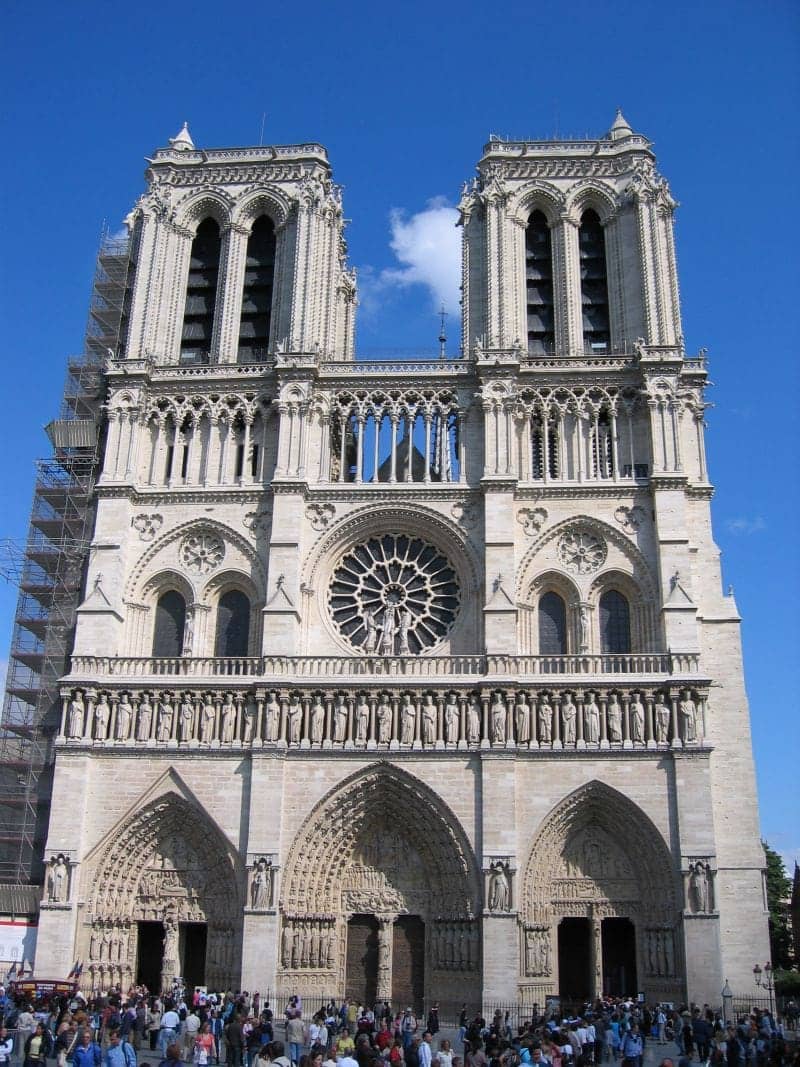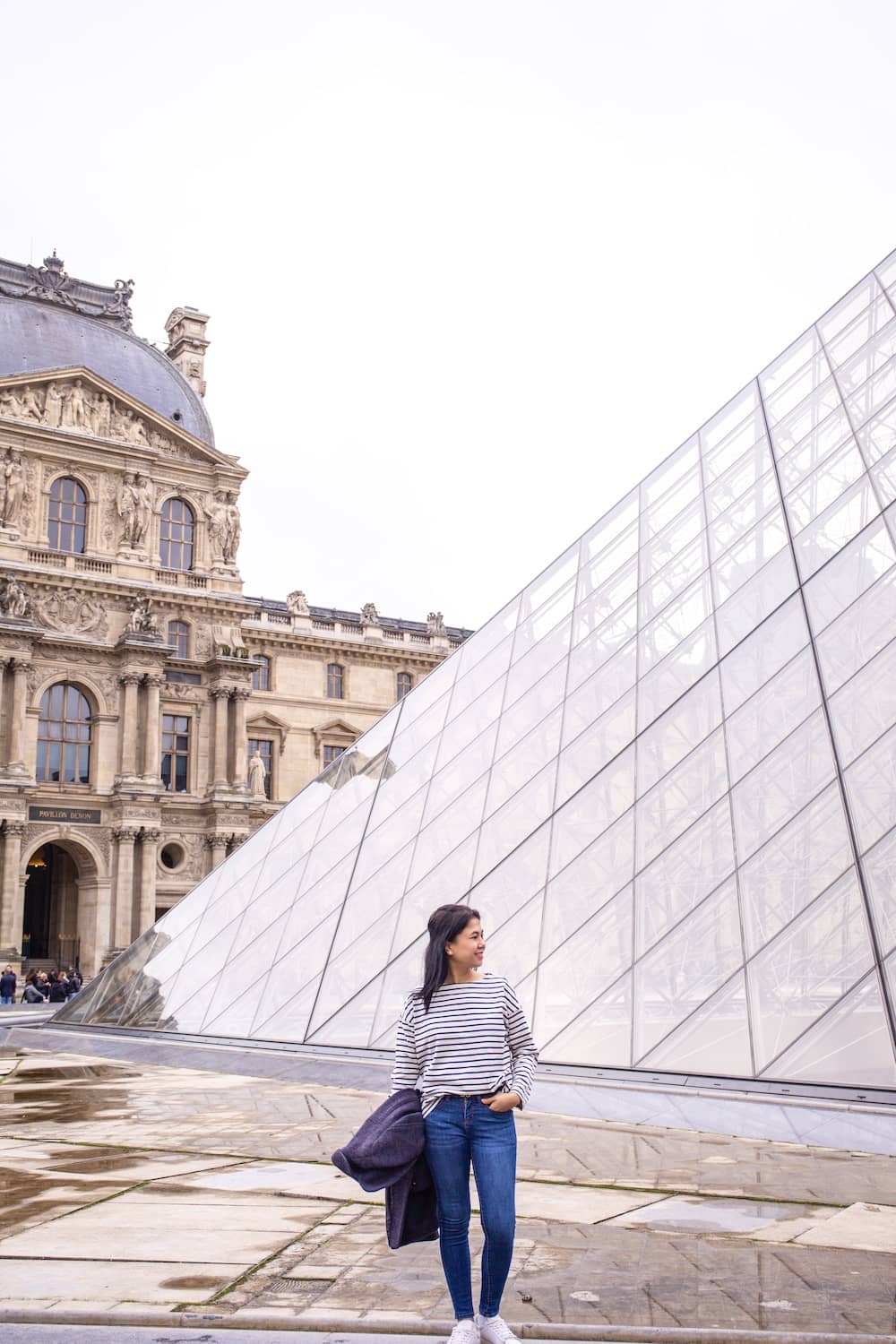Paris is known as the City of Love. It is famous for its romantic setting and a well-known destination for honeymooners and even for simple couples.
Like Rome, Paris is also known as the global center for arts, fashion, culture, and French gastronomy – which makes it one of the most visited cities in the world. Because of this, Paris can be an expensive place to travel to.
However, it doesn’t mean that you should exclude Paris in your European itinerary and that you won’t find things to do in Paris without breaking the bank. Paris on a budget is still doable. How? Here are the top free things to do in Paris, France.
Things you'll find in this article
- 8 Free Things To Do In Paris, France
- 1. Take that epic Eiffel picture from Trocadero Gardens
- 2. Visit the world’s most visited cemetery
- 3. Visit the Notre-Dame Cathedral
- 4. Discover the Richelieu Library
- 5. Explore the Luxembourg Gardens
- 6. Walk around Tuileries Gardens
- 7. Watch the sunset and enjoy the city view from Sacré-Coeur
- 8. Learn more about Victor Hugo
8 Free Things To Do In Paris, France
1. Take that epic Eiffel picture from Trocadero Gardens

Looking for the best view of the Eiffel Tower in Paris?
Look no further than the Trocadero Garden: this Parisian garden are nestled right in front of the famous tower, set far enough back that the entire tower can be captured in photos- and as such, it is home to many of the most famous photo spots and should be included in your Paris itinerary.
Looking for those shots of the carousel with the Eiffel Tower in the background? It’s here.
Looking for the staircase that’s framed perfectly by the tower, or the beautiful marble porch perfect for photos? Yep, those are at the Trocadero Garden, too.
Festivals take place in the Trocadero Garden year-round – for example, this is where you can find a delightful Parisian Christmas and ice skating rink in the winter.
Trocadero is also one of the best spots to watch the sunrise in Paris. And because it’s early, you can also easily hop on to the Eiffel tower and enjoy it without the massive crowd.
Trocadero, along with the Eiffel Tower, is one of the best places to see Paris.
Buy your ticket online here.
2. Visit the world’s most visited cemetery

Père Lachaise is the largest cemetery in the city of Paris and is the world’s most visited cemetery. Most visitors to the cemetery stop by the final resting place of Oscar Wilde, James Morrison, and Frederic Chopin.
Oscar Wilde’s grave is the busiest in the cemetery and visitors flock to adorn the grave with red lipstick kisses. It has attracted so many lipstick marks that the tomb suffered irreparable damage and Wilde’s family had to erect a protective barrier to preserve his resting place.
Jim Morrison, best known as the lead singer of the Doors, is also buried in the cemetery and a colorful chewing gum-covered tree stands close by his simple grave.
The muse of music, Euterpe, weeps as she watches over the grave of the renowned Polish composer and pianist Chopin as she cradles a symbolic broken instrument.
Père Lachaise is also home to some beautiful and ornate tombs. One beautiful tombstone depicts a resting dog with the simple tribute ‘Lick, our faithful friend’.
3. Visit the Notre-Dame Cathedral

Your visit to the City of Love (as clichéd as it that sounds) will definitely not be complete without a visit to Notre-Dame de Paris – also known as the Notre-Dame Cathedral. Not only is it one of the largest churches in the world but also one of the grandest examples of Gothic architecture.
Its western facade is adorned by two spectacular and ridiculously tall towers (223 feet high). Visiting these towers would require you to buy tickets, however, entry to the cathedral is otherwise free.
Other than being a deeply spiritual experience, a visit to the Notre-Dame Cathedral will be one you’ll cherish forever. Once you enter, you’ll be spellbound at its sheer enormity – it’s about 427 feet in length and has a ceiling that’s 115 feet high.
You can spend hours marveling at the gorgeous stained glass and rose windows. There are also a number of beautiful sculptures and artwork that reflect the Neo-Gothic style and design.
4. Discover the Richelieu Library

Aside from food, France is a country that prides itself on the preservation of its culture and knowledge from antiquity up through the modern age, so it makes sense they ’d also take great pride in their library system.
The Richelieu Library, though quite historic, is part of the Bibliothèque Nationale de France (BNF). Home to large collections of manuscripts, coins, music, prints, and maps, much of the building is currently in the midst of a 10-year renovation project, but its stunning reading room is still open for use.
Built-in the mid-1800s by architect Henri Lebroust, this reading room has been considered a historic monument since the 1980s and is one of the lighter, brighter, and more beautiful libraries in France.
Opening Hours:
Tuesday to Sunday. 10 a.m. to 6 p.m.
Admission Fee:
1-day Research Pass -€ 5
5-day Research Pass (consecutive or not) 20 €
BnF Research Pass 1 year unlimited 50 €
Contact Information:
Address:58, rue de Richelieu 75002 Paris
Phone:33(0)153795959
5. Explore the Luxembourg Gardens

The Luxembourg Gardens are home to Luxembourg Palace, where the French Senate sits, as well as 25 hectares of gardens, over 100 statues, a majestic forest, and an enormous decorative pond.
Here you can admire the magnificent palace, take a free guided tour, enjoy free photographic exhibitions or one of the frequent concerts in the bandstand.
If you are in Paris with kids, the best things to do are play at the incredible playground, ride the carousel, watch a puppet show or sail a model boat on the pond.
Take a stroll around the central gardens in front of the palace to view 20 sculptures of French queens and famous women. Or explore deeper into the gardens to discover the verdant Medici Fountain or dramatic Fountain of the Observatory.
These grand yet peaceful gardens are a calming place to escape the busy Paris streets and breathe the fresh, rose-scented air.
6. Walk around Tuileries Gardens

My favorite afternoon in Paris was spent walking through the gardens of the Tuileries. The rectangular park spans the area between the Place de la Concorde and the former palace of the Louvre, now the world’s largest museum.
It is a place where you will find tourists, but also Parisians out enjoying the sun and the French formal gardens commissioned by King Louis XIV in 1664.
You will find sculptures from such masters as Maillol, Rodin, or Giacometti sprinkled through the greenery. There are two ponds to relax by.
The most charming part of the gardens, however, are the lawnmowers. Tied up goats work keeping the grass short in parts of the gardens.
READ MORE: 13 Interesting Facts About Tuileries Gardens
7. Watch the sunset and enjoy the city view from Sacré-Coeur

It’s not hard to find Sacré-Coeur as it sits atop the butte Montmartre, the highest point in the whole city. A really great time to visit is in the evening to watch the sunset over Paris and all the lights start twinkling on in the city below.
We recommend getting there early, as it can be crowded, to find your spot to sit on the steps.
Construction on the basilica started in 1875 and it took 39 years to complete it to the top of its 83m high dome. It was built as a symbol of national reconciliation and hope after France’s defeat in the 1871 Franco-Prussian War.
Inside, take your time to wander as you’ll find beautiful mosaics, especially the piece above the altar, and wonderful stained-glass windows. How does Sacré-Coeur manage to stay such a beaming white color? This can be attributed to the travertine stones used to build it.
When it rains, the stones react to the water and secrete calcite which acts like a bleacher. Ingenious!
8. Learn more about Victor Hugo

Situated in the elegant Place des Vosges in the Marais, the Maison de Victor Hugo is housed on the second floor of the Hôtel de Rohan-Guéménée.
The celebrated Romantic novelist Victor Hugo lived there from 1832 to 1848. The house is a recreation of several of the novelist’s homes, as well as that of Juliette Drouet, his mistress.
Hugo’s turbulent life before, during, and after his political exile to the Channel Islands following Napoleon III’s rise was envisioned by the curators in a chronological journey through the museum. In the small writing room, Auguste Rodin’s famous bust of Hugo can be found.
Surprisingly, the house reveals that Hugo had a speciality in interior design in addition to being a prolific writer. Furniture and works of art by Hugo or from his collection are used to create themed rooms. And the best thing? This is one of the best free museums in Paris.
Booking.com
Hi, I’m Christine – a full-time traveler and career woman. Although I’m from the Philippines, my location independent career took me to over 40 countries and lived in 4 continents in the last 10 years, including France. A self-proclaimed Francophile, I love everything France.
